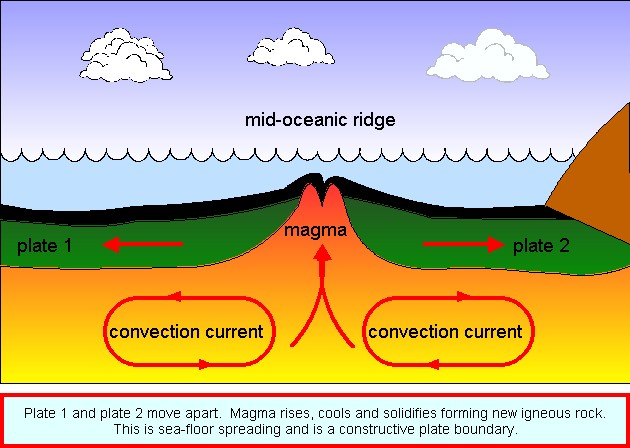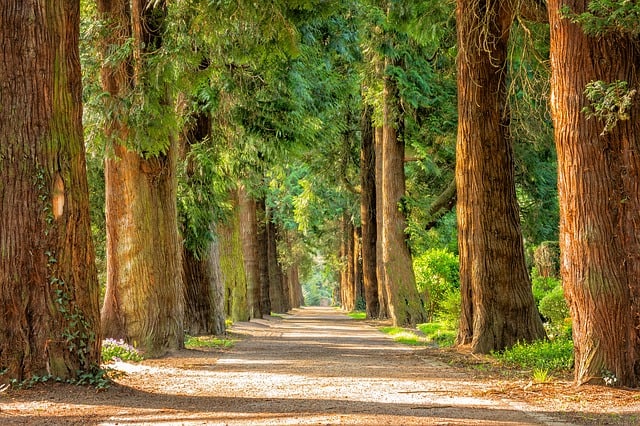What is Oxygen Cycle and Process of Oxygen Cycle

The oxygen cycle elaborates how oxygen circulates in various forms through nature. Oxygen occurs freely in the air, trapped in the earth crust as chemical compounds, or dissolved in water. Oxygen in the atmosphere is about 21%, and it is the second most abundant gas after nitrogen. It is mostly utilized by living organisms, especially man and animals in respiration. Oxygen is also the most common element of human body.
Oxygen is also used during combustion, decomposition, and oxidation. The circulation of oxygen is through three main flow systems including the (air) atmosphere, the biosphere, and the earth’s crust. In the oxygen cycle, the main driving factor is photosynthesis which is the process whereby green plants and algae make their own food by use of solar energy, water, and carbon dioxide to gives off oxygen as a by-product.
Hence, for oxygen to remain in the atmosphere, it has to circulate through various forms of nature which is essentially termed as the oxygen cycle. The circulation depends on the various activities on Earth.
More about other cycles:
According to Britannica,
“Oxygen cycle, circulation of oxygen in various forms through nature. Free in the air and dissolved in water, oxygen is second only to nitrogen in abundance among uncombined elements in the atmosphere. Plants and animals use oxygen to respire and return it to the air and water as carbon dioxide (CO2). CO2 is then taken up by algae and terrestrial green plants and converted into carbohydrates during the process of photosynthesis, oxygen being a by-product.“
Process of Oxygen Cycle
The Atmosphere (air)
The atmosphere carries a small quantity of all oxygen, only about 0.35% of the entire earth’s oxygen. In the atmosphere, oxygen is released by the process known as photolysis. Photolysis happens when the ultraviolet radiation of sunlight breaks apart oxygen-containing molecules such as nitrous oxide and atmospheric water to release free oxygen. The surplus oxygen recombines with other oxygen molecules to form ozone while the rest is freed into the atmosphere. Ozone is the layer that helps to shield the Earth from the dangerous ultra violet rays.
Biosphere
The biosphere carries the smallest quantity of all earth’s oxygen, about 0.01%. In the biosphere, the major oxygen cycles are photosynthesis and respiration. In these two processes of the oxygen cycle, it is interconnected with the carbon cycle and the water cycle. During photosynthesis, plants and planktons use sunlight energy, water, and carbon dioxide to make food (carbohydrates) and release oxygen as a by-product. As such, plants and planktons are the main producers of oxygen in the ecosystem. They take in carbon dioxide and give out oxygen. Plants are estimated to replace about 99% of all the oxygen used.
On the other hand, respiration happens when humans and animals breathe in oxygen which is used during metabolism to break down carbohydrates and exhale carbon dioxide as a by-product. Such free carbon dioxide is then released into the environment and is used by plants and planktons during photosynthesis to give out molecular atmospheric oxygen, thus completing the oxygen cycle. Therefore, suffice is to say that oxygen enters organisms in the biosphere through respiration and is expelled through photosynthesis in a process that is interconnected with the carbon cycle plus the water cycle.
However, the continued release of carbon dioxide into the atmosphere by burning fossil fuels and automobile pollution affects the oxygen cycle.
The Lithosphere (Earth’s Crust)
The lithosphere carries the largest quantity of all earth’s oxygen, about 99.5%, because it is a constituent of the earth’s lands, soils, organic matter, biomass, water, and rocks. Mostly, these constituents of the earth fix oxygen in mineral chemicals compounds such as oxides and silicates. The process is natural and happens automatically as the pure mineral elements absorb or react with the free oxygen. It happens similar to the manner in which iron picks up oxygen from the air, resulting in the formation of rust (iron oxides).
As such, during chemical reactions and some weathering processes, a portion of the trapped oxygen in the minerals is released into the atmosphere. Also, as animals and plants draw nutrient minerals from rocks, organic matter, or biomass, some of the trapped oxygen is freed in the process. Dissolved oxygen is also present in water system which is essential for the survival of aquatic life forms. As a result, these processes combined gives rise to oxygen cycle in the biosphere and lithosphere.
Processes that Use Oxygen
- Respiration: When we breather, we use oxygen and release carbon dioxide. Similarly, animals and plants also use oxygen when they breathe.
- Combustion: When you burn something let’s say a paper, you need three things for combustion to take place i.e. oxygen, fuel and heat. So, when you burn a paper, it uses oxygen and releases carbon dioxide and may be some other gases.
- Decomposition: Decomposition occurs when plants and animals die. When this happens, they decompose and such process uses oxygen and releases carbon dioxide.
- Rusting: When things rust, they use oxygen. This is also called as oxidation.
Processes that Produce Oxygen
- Plants: Plants produce oxygen during the process of photosynthesis. During the process of photosynthesis, plants use carbon dioxide, sunlight, and water to create energy.
- Sunlight: Some oxygen also gets produced when sunlight reacts with water vapor in the atmosphere.






